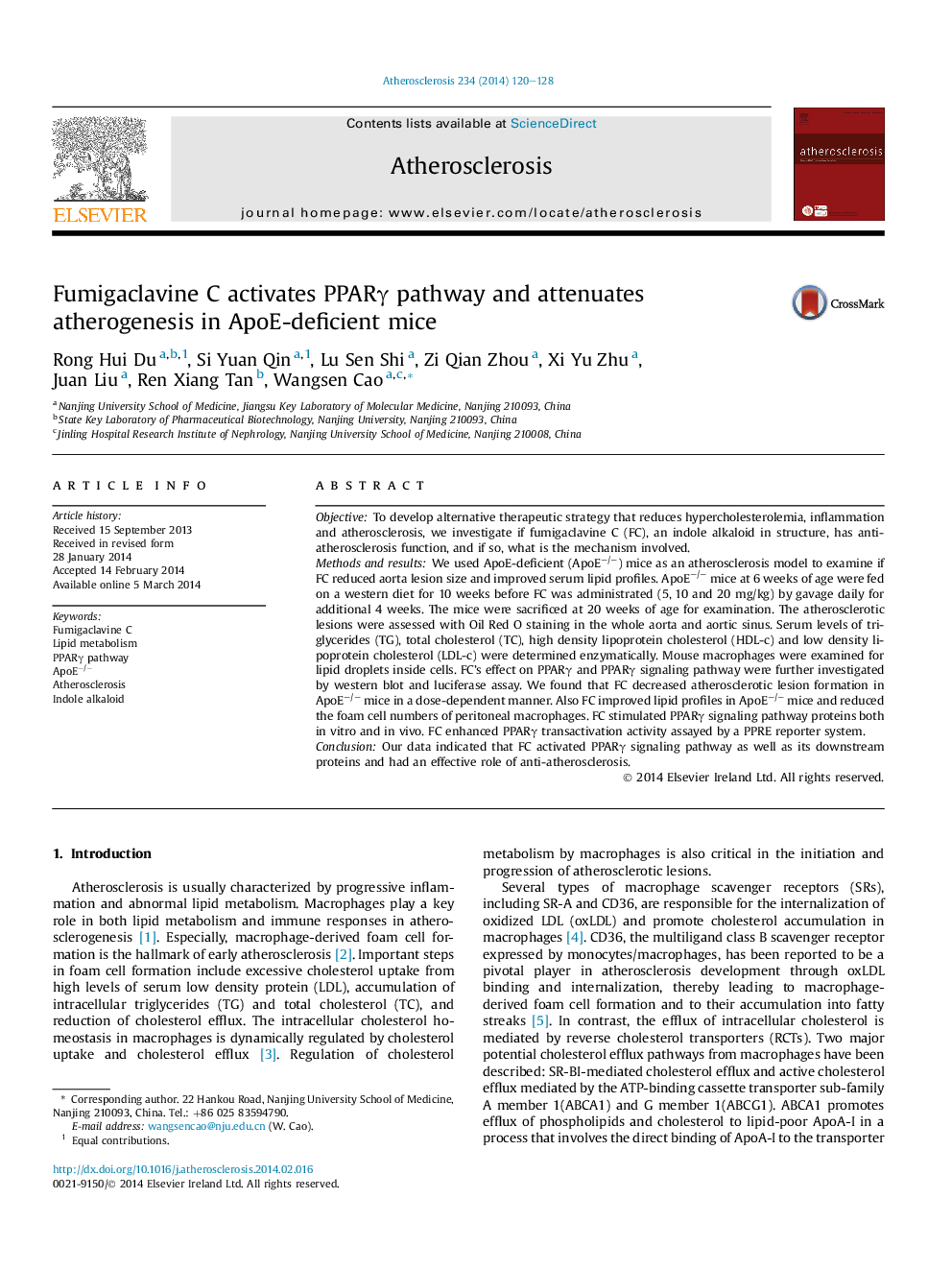| کد مقاله | کد نشریه | سال انتشار | مقاله انگلیسی | نسخه تمام متن |
|---|---|---|---|---|
| 5946487 | 1172359 | 2014 | 9 صفحه PDF | دانلود رایگان |

- FC inhibits atherosclerotic lesion and improves lipid profiles in ApoEâ/â mice.
- FC decreases foam cell formation and ester accumulation in peritoneal macrophages.
- FC activates the PPARγ pathway, improves metabolism-related protein expression.
- FC inhibits atherosclerosis through modulating both lipid transport and metabolism.
ObjectiveTo develop alternative therapeutic strategy that reduces hypercholesterolemia, inflammation and atherosclerosis, we investigate if fumigaclavine C (FC), an indole alkaloid in structure, has anti-atherosclerosis function, and if so, what is the mechanism involved.Methods and resultsWe used ApoE-deficient (ApoEâ/â) mice as an atherosclerosis model to examine if FC reduced aorta lesion size and improved serum lipid profiles. ApoEâ/â mice at 6 weeks of age were fed on a western diet for 10 weeks before FC was administrated (5, 10 and 20 mg/kg) by gavage daily for additional 4 weeks. The mice were sacrificed at 20 weeks of age for examination. The atherosclerotic lesions were assessed with Oil Red O staining in the whole aorta and aortic sinus. Serum levels of triglycerides (TG), total cholesterol (TC), high density lipoprotein cholesterol (HDL-c) and low density lipoprotein cholesterol (LDL-c) were determined enzymatically. Mouse macrophages were examined for lipid droplets inside cells. FC's effect on PPARγ and PPARγ signaling pathway were further investigated by western blot and luciferase assay. We found that FC decreased atherosclerotic lesion formation in ApoEâ/â mice in a dose-dependent manner. Also FC improved lipid profiles in ApoEâ/â mice and reduced the foam cell numbers of peritoneal macrophages. FC stimulated PPARγ signaling pathway proteins both in vitro and in vivo. FC enhanced PPARγ transactivation activity assayed by a PPRE reporter system.ConclusionOur data indicated that FC activated PPARγ signaling pathway as well as its downstream proteins and had an effective role of anti-atherosclerosis.
Journal: Atherosclerosis - Volume 234, Issue 1, May 2014, Pages 120-128